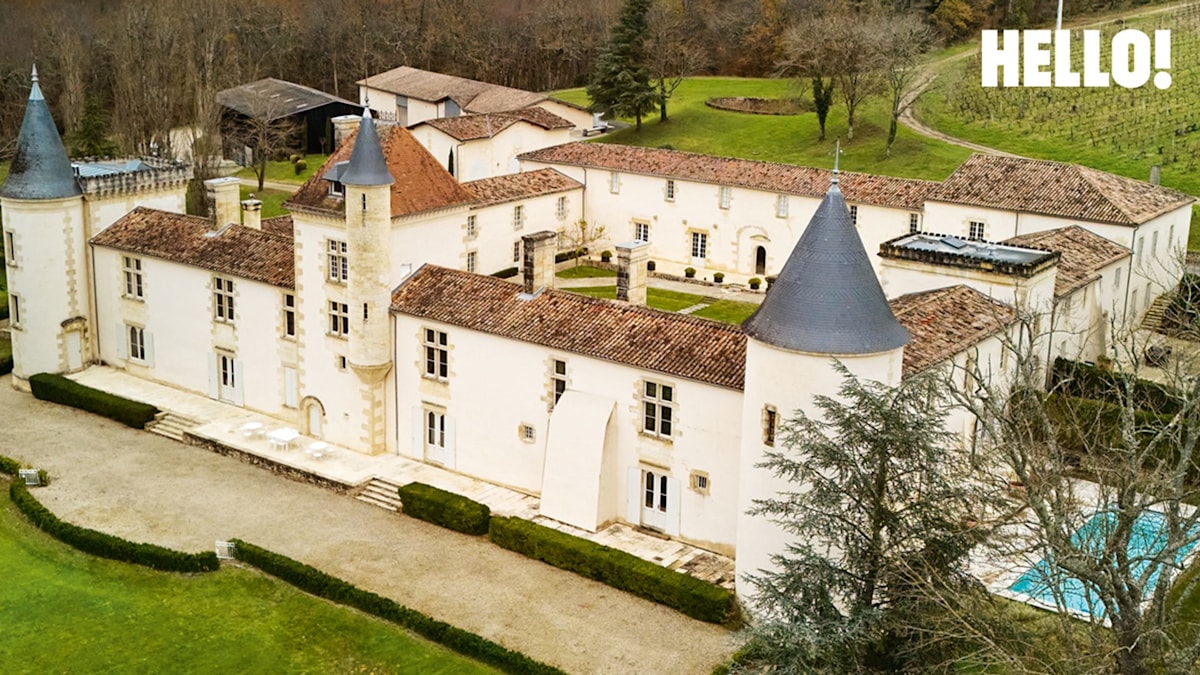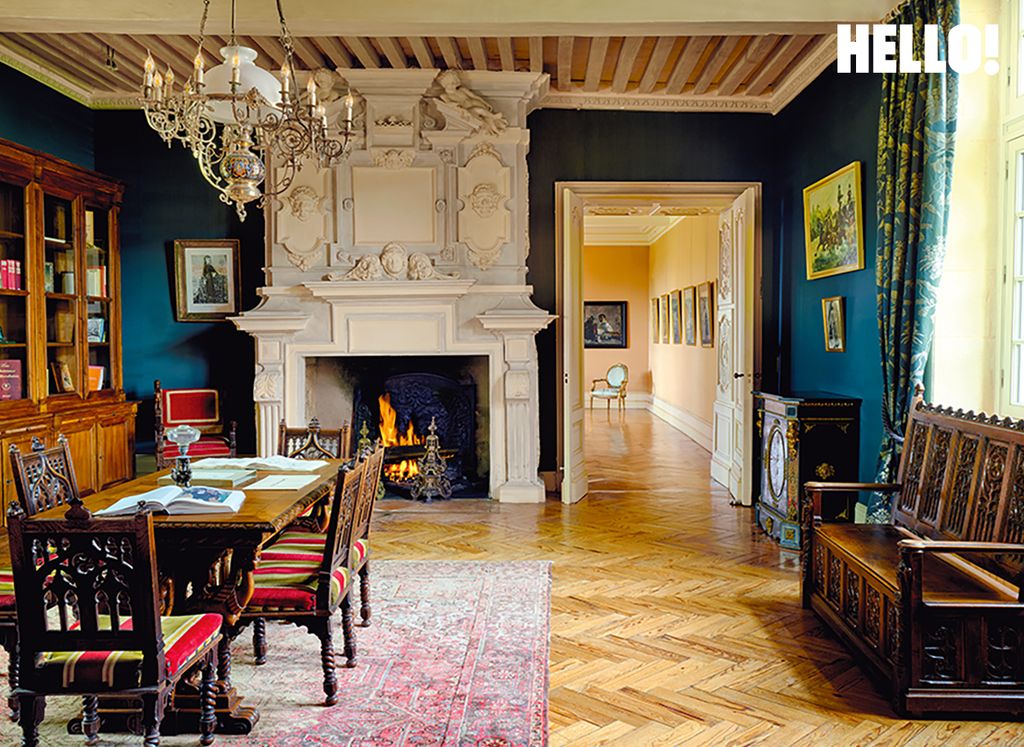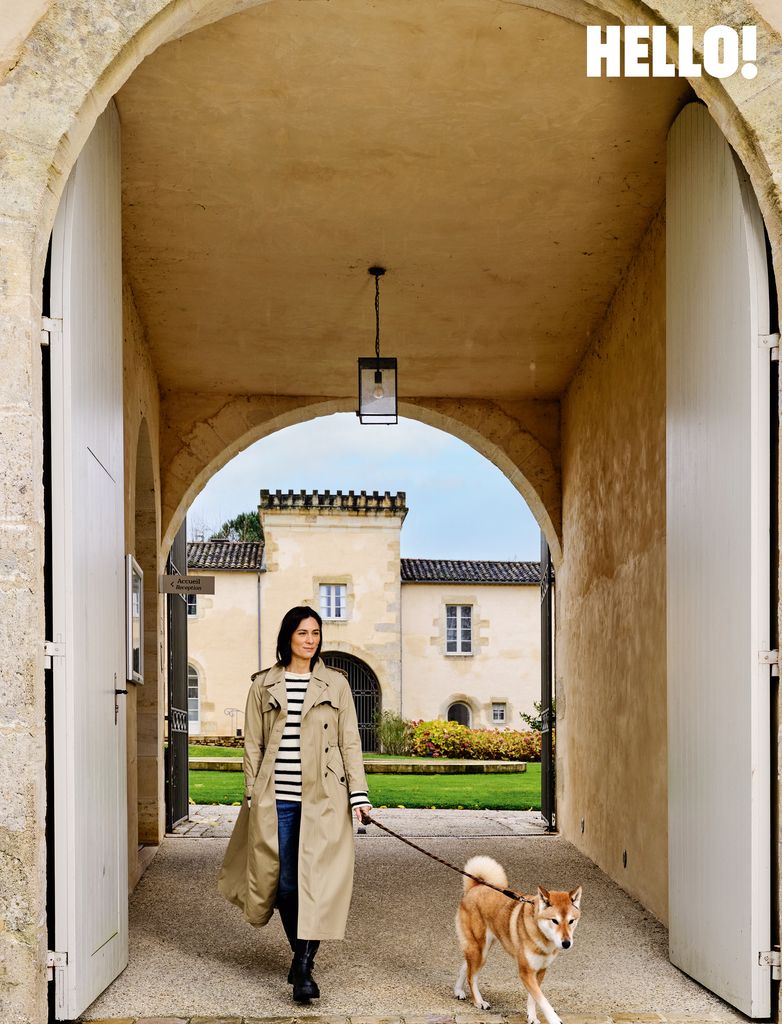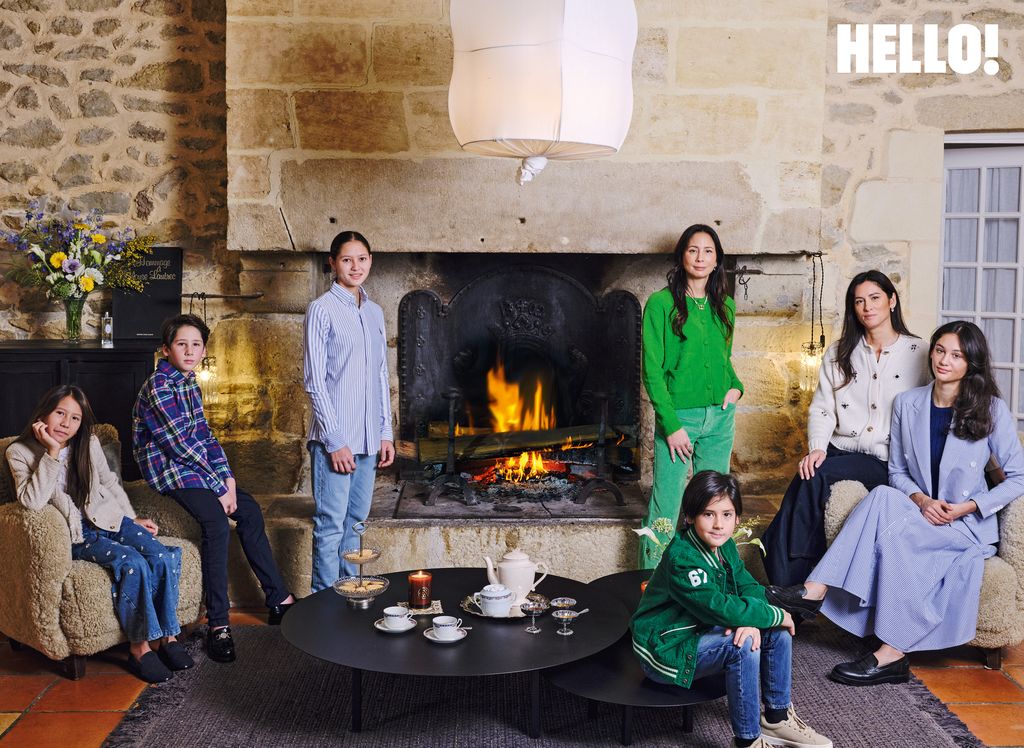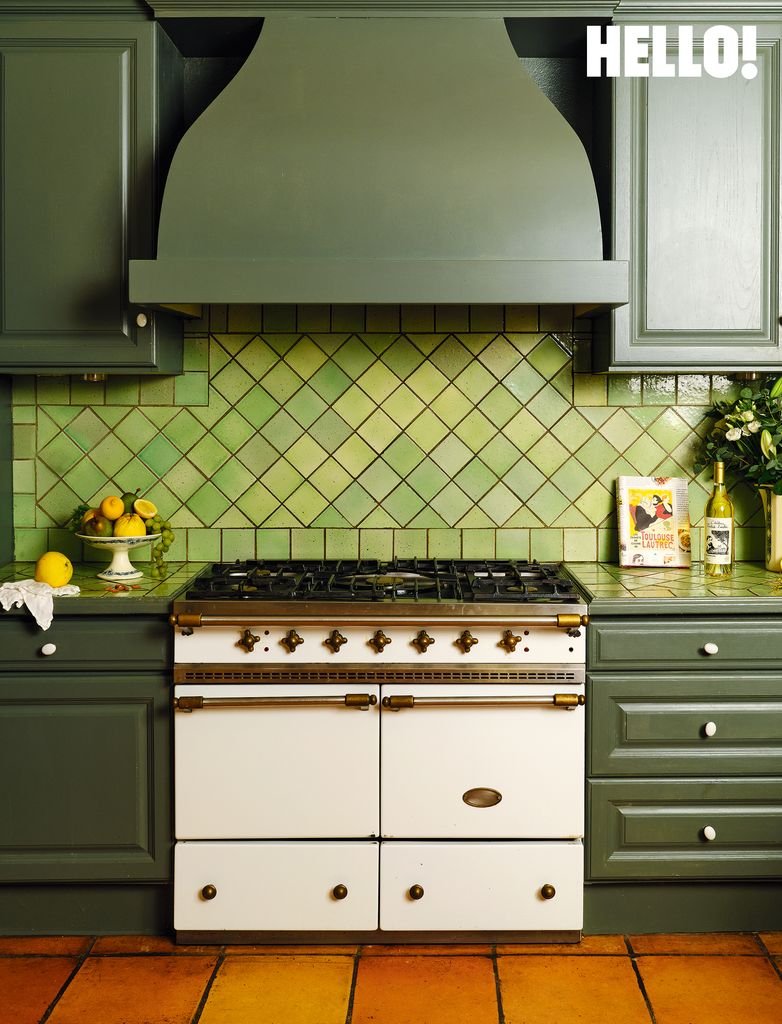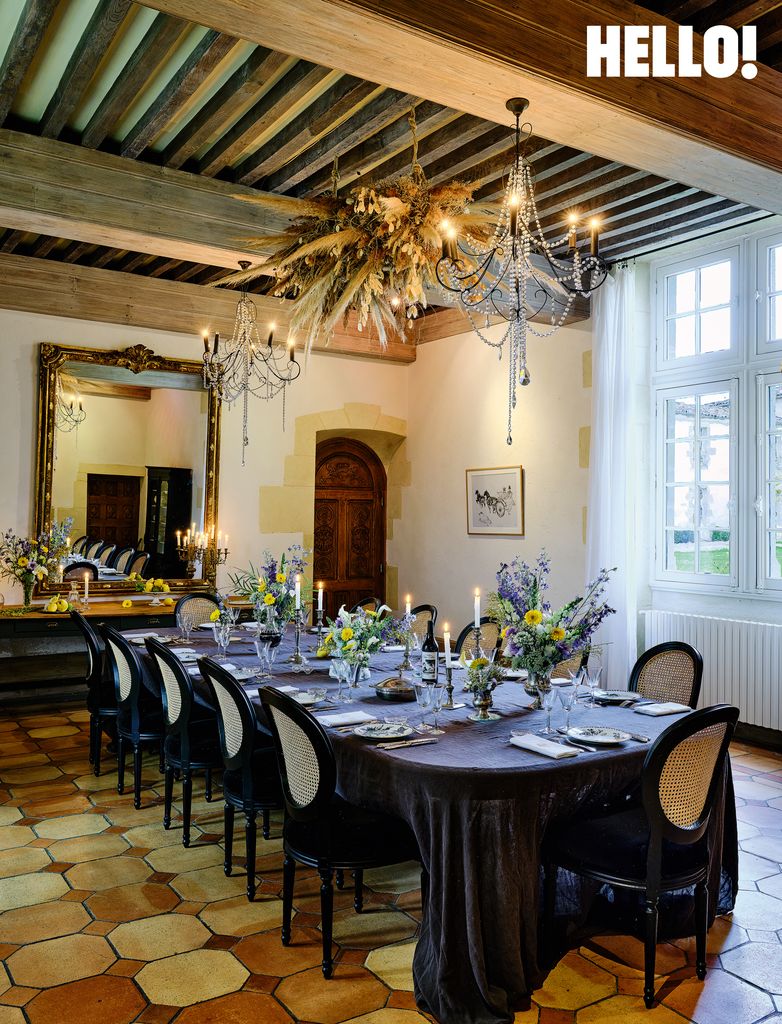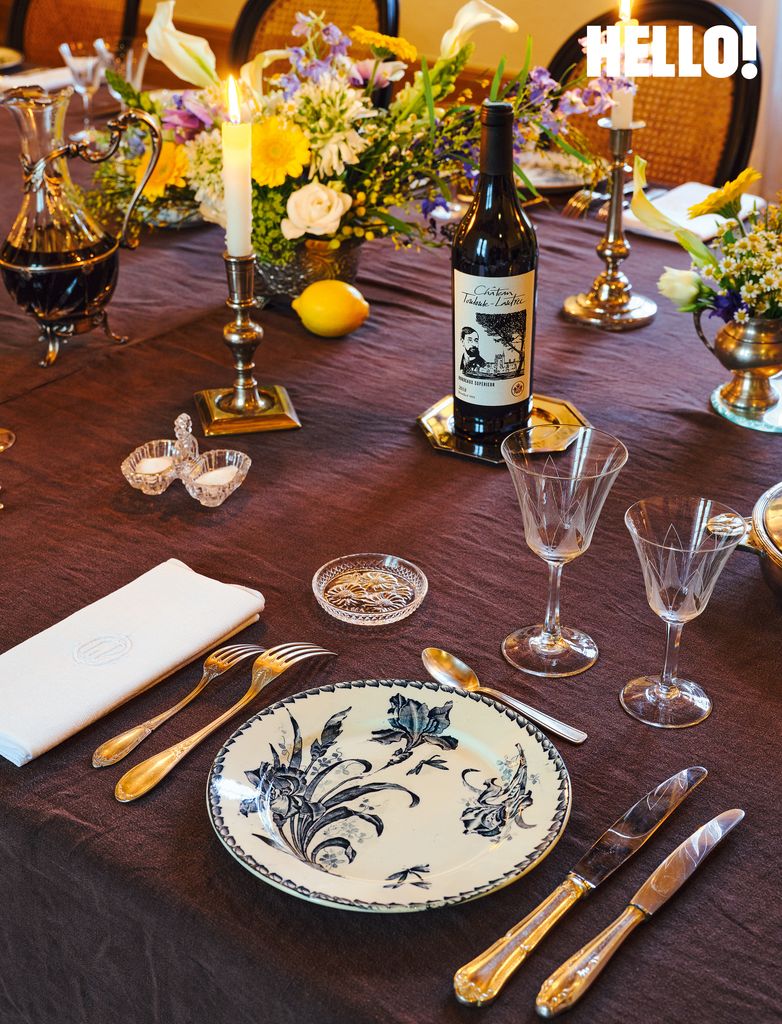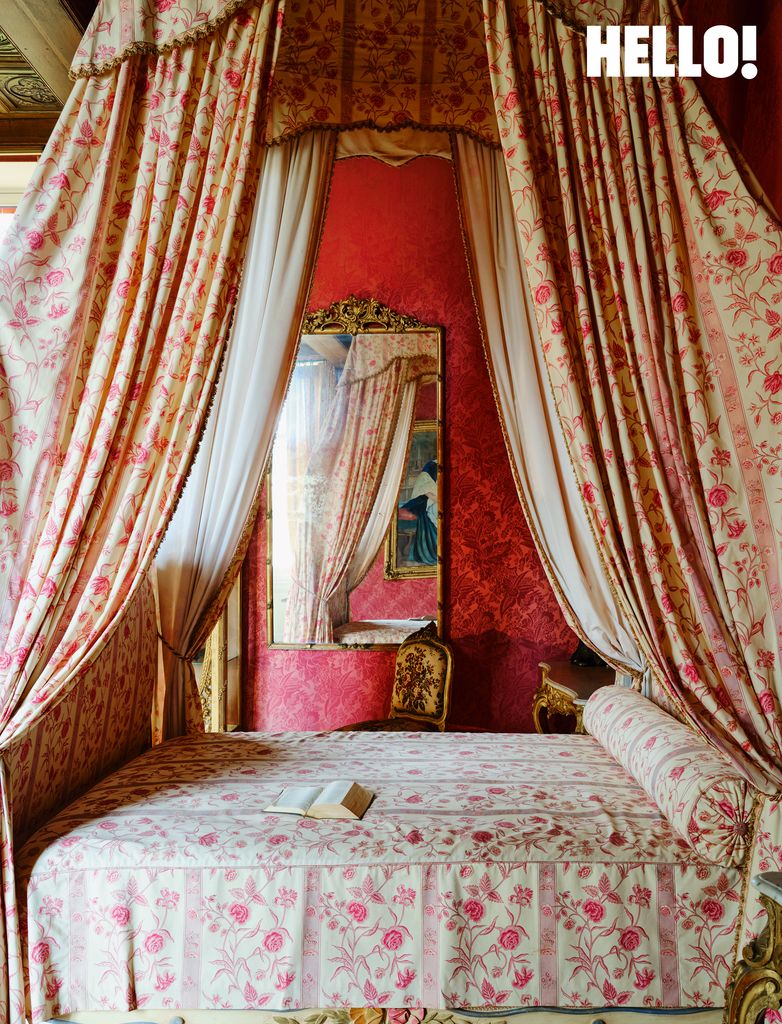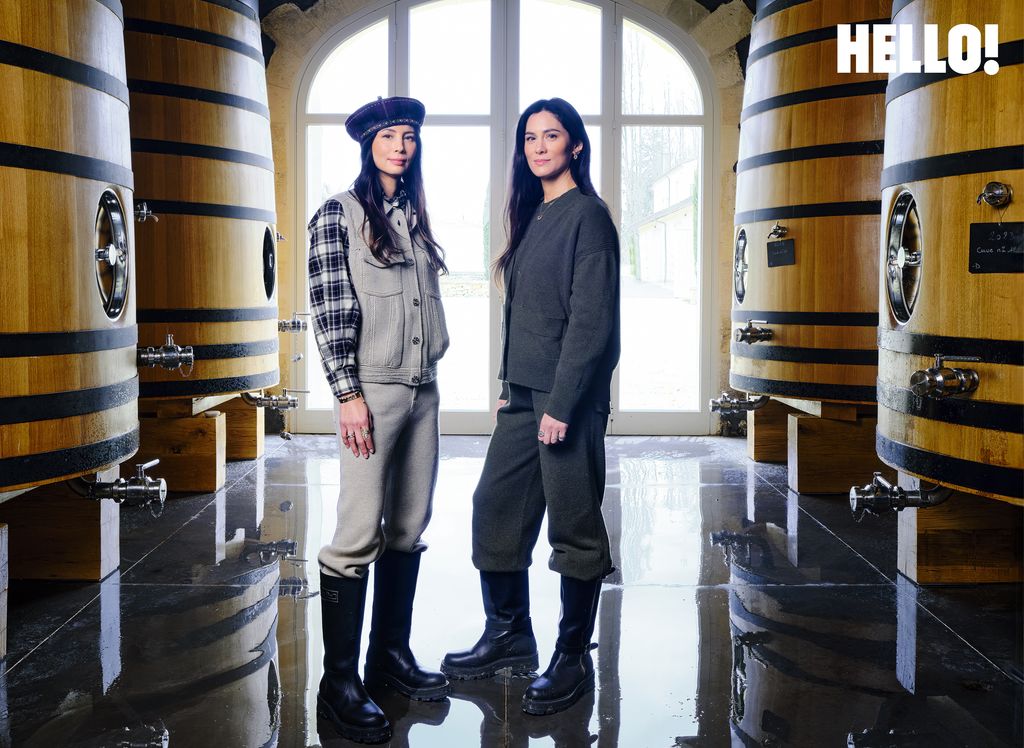Kim Valéry Huynh, owner of ChâteauToulouse-Lautrec, arrived in France from his native Cambodia when he was just 16 years old.
He fell in love with the country straight away, going on to marry a Frenchwoman and to build a hugely successful business supplying French luxury goods to the Asian market.
Then, in 2013, he decided that it was time to treat himself and his family to a great luxury of their own. That’s when he bought this fabulous château, crowned with two towers and surrounded by a lush vineyard, in the beautiful wine country south of Bordeaux.
Kim Valéry’s two daughters, Mélanie and Amélie, say as they welcome us in: ”Our father adores France’s art, culture and gastronomy, so he dreamed of a place steeped in history.
“When we discovered this place, it seemed like Sleeping Beauty’s castle. It had survived 500 years of history and now lay waiting to be reawakened. That it had once been the home of a painter as illustrious as Henri de Toulouse-Lautrec was the icing on the cake.”
Spectacular as it was, the château was badly in need of repair. So Mélanie and Amélie – both busy Paris-based mothers and businesswomen – have devoted all their spare time and energy to bringing it back to life, restoring it with the help of architect Laurent Negretti and a team of local artisans. It has been very much worth the effort.
”This is a place where we all feel at peace,” they say, adding: ”It’s part of French heritage and we absolutely feel the need to share that legacy and preserve it for generations to come.”
Mélanie and Amélie, it must feel wonderful to have helped make your father’s dream come true…
”Yes, we searched for a long time to find the château.”
Tell us about its association with Henri de Toulouse-Lautrec…
”Henri’s mother, Countess Adèle de Toulouse-Lautrec, acquired it in 1883, when Henri was 19. He painted the figure of the master winemaker on one of the walls on the first floor. Although many of his paintings conjure up bohemian life in Paris, this was actually his last home; he died here in 1901 and was laid to rest in a cemetery nearby.
”Although we had our doubts about the scale of the renovation work that was needed, the idea that Henri had lived here was enough to convince us.”
Can you describe the architecture?
”It started out as a 16th-century manor house, with Renaissance elements such as mullioned windows and steep roofs. In the 19th century, it was extended and remodelled, according to the taste of the time.
”So it’s a mix of architectural elements that bear witness to its past, while the blonde stone typical of this region anchors it firmly in theBordeaux landscape.”
Your restoration is impressive…
”Our aim was to modernise the château while respecting its history – a lengthy process that we’ve only just completed. The courtyard was nothing to write home about, the wine cellar’s roof was in danger of collapsing and the east wing was completely abandoned, making it impossible to access the second floor, which, miraculously, was still standing.
”The interior design, by Isabelle Stanislas, is in keeping with the place but also adds a contemporary dimension. For example, the mirrors in the reception room have been treated with mercury to achieve a natural aged effect, and the stainless steel lighting has been set into the ceilings.”
What is life here like?
”For us, the castle is synonymous with holidays, tranquillity and relaxing as a family. This is a place where we all feel at peace, where time stops flying and flows, more like a slow river.
”Although the château does have a commercial side, the atmosphere is different when we’re simply spending time here with our families.”
Are there private as well as public areas?
”Of course. When you arrive at the château, it makes quite an impression. It’s part of French heritage, linked to an important artist, and we absolutely feel the need to share that legacy and preserve it for generations to come.
”But the part we stay in is like a big house, with a living room, kitchen and bedrooms. There, you don’t feel oppressed by grandeur.”
Which is your children’s favourite area?
”We’d like people to think it’s the historical part of the building, and they do love that. But their favourite spot is the swimming pool, especially in summer.”
How do you like to spend your time here?
”We love getting up early, while the children are still asleep, to go for a run through the vineyard. Then we gather everyone for breakfast by the fireplace in the dining room.
”We like to visit the local open-air markets, like the one in Cadillac-sur-Garonne. The end of the day, when it gets dark, is the perfect time to practise yoga and meditate in our shala studio.
”In autumn, we all gather around the hearth to drink herbal teas and play board games. In summer, cocktails and grape juice outside on the south terrace are a must.”
Do you follow any holiday traditions here?
”At Easter, it’s great fun to hide chocolate treats around the gorgeous gardens, forests and vineyard. The children can spend an hour looking for them.
”As for Halloween, this place is perfect.”
Your vineyard is one of the oldest in the region…
”It is. We grow eight grape varieties, for both red and white wine, and are currently converting to organic production.”
Mélanie, you’ve developed a cosmetics brand, Holidermie. What inspired you?
”This estate played a part. Eight years ago, I stayed here with my best friend, who’s a plastic surgeon and skincare expert. Looking out at the grapes and the pine trees, we thought about the incredible potential of natural antioxidant extracts.
”That was one of the ideas we used to create Holidermie, which has three pillars: food supplements, cosmetics and tools.”
Amélie, what’s the idea behind your jewellery brand, Statement Paris?
”I want to think of my designs as more than just elegant adornment. I chose that name because that’s exactly what they’re doing: making a statement.
”We want our customers to celebrate themselves with our pieces, to mark their achievements and the milestones in their lives. I also see my creations as talismans to protect and guide you.”
Read the full article here


